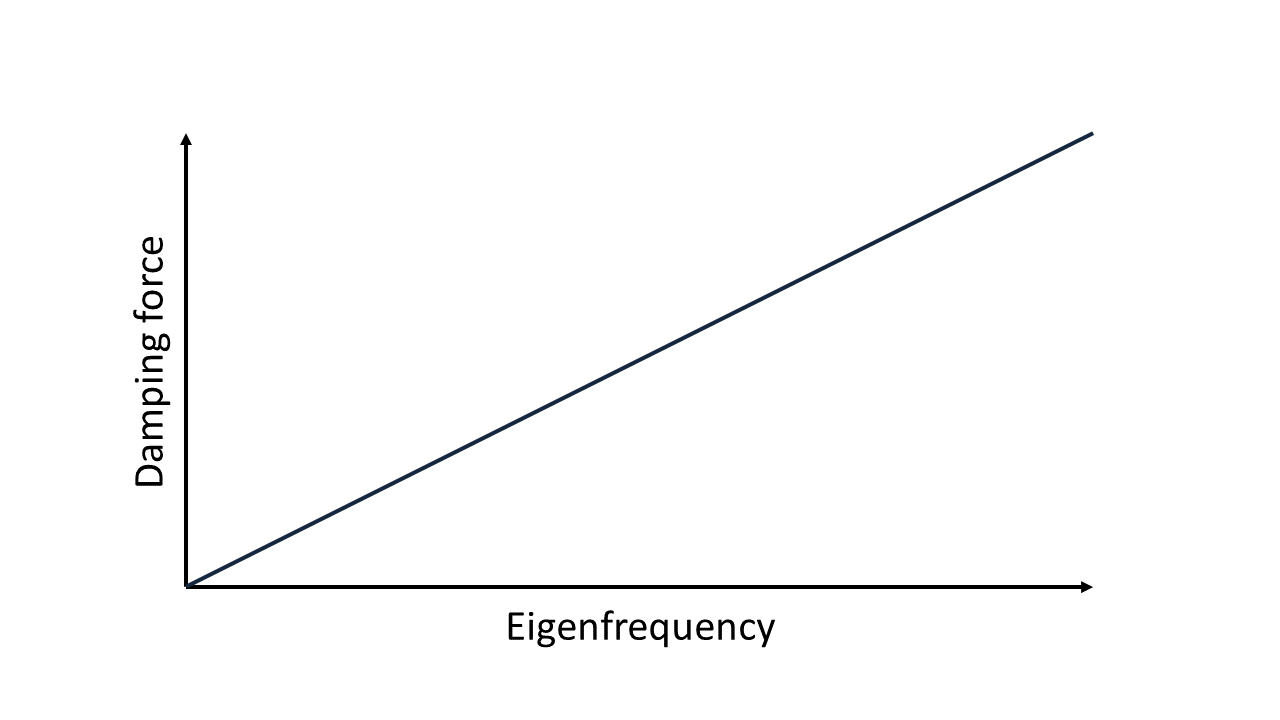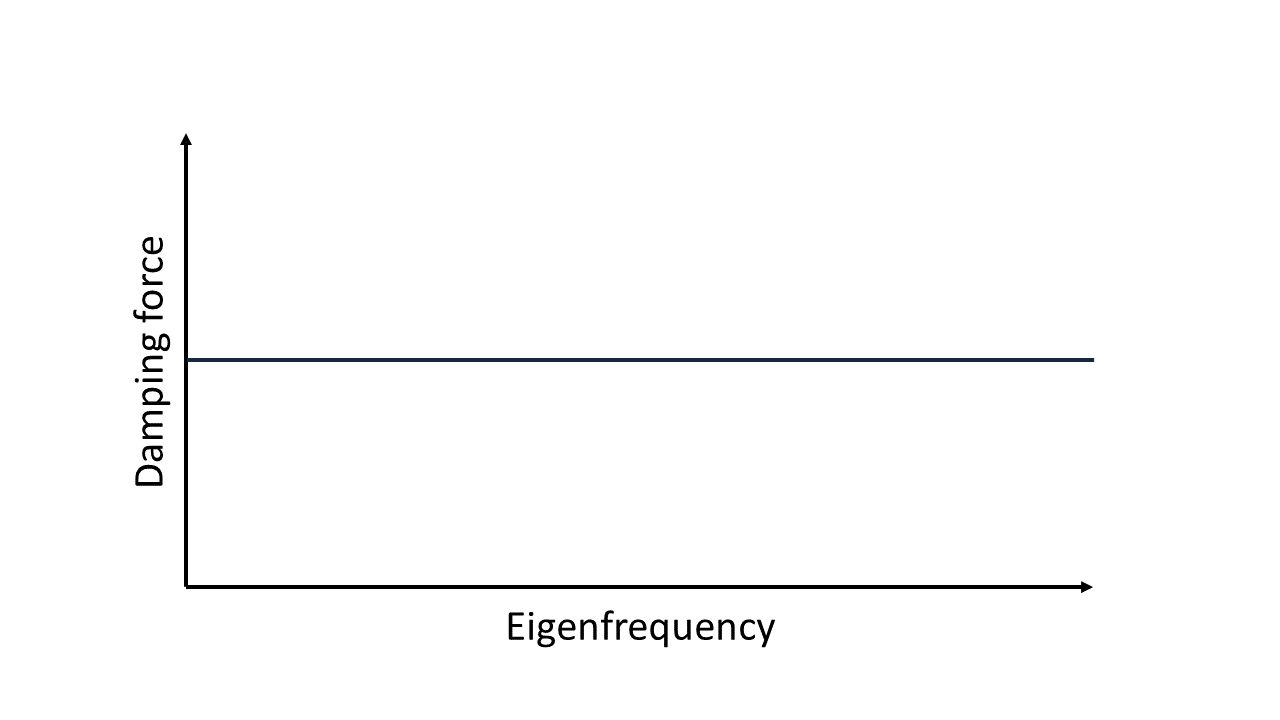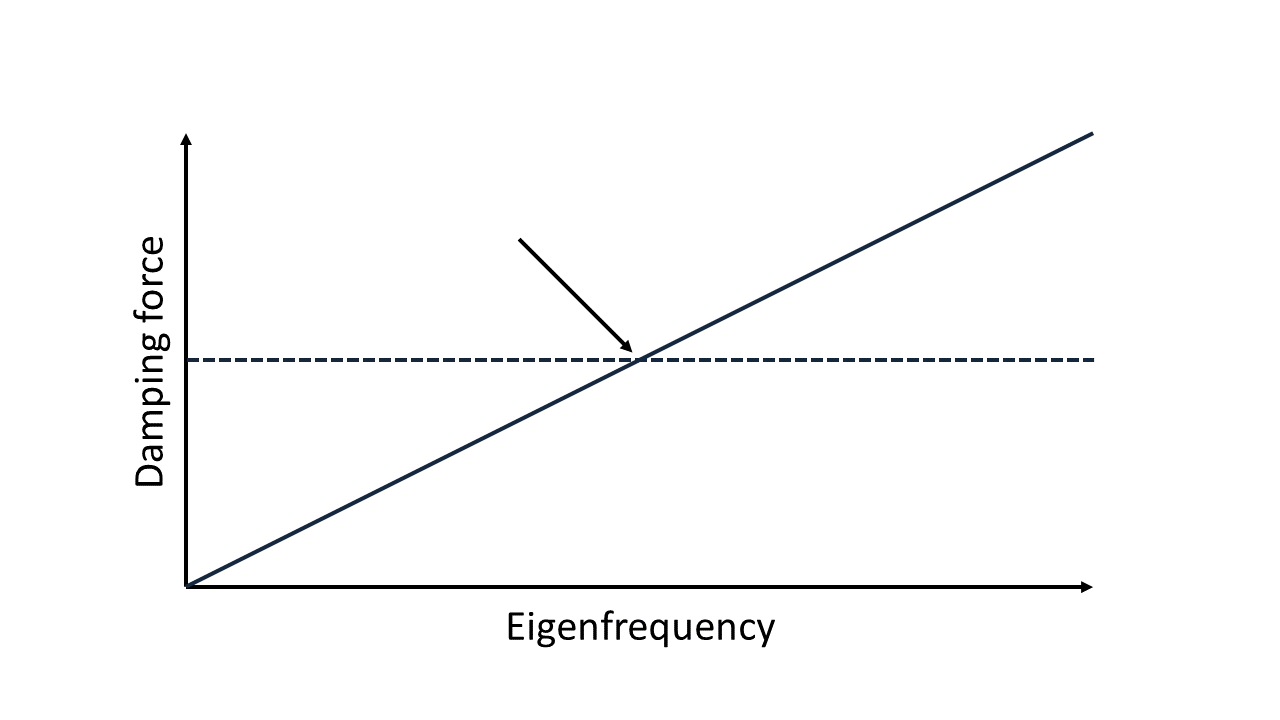Link properties¶
Damping methods¶
The following damping methods can be applied to links in MORe using the corresponding link properties.
Viscous damping¶
The damping force is proportional to the velocity of the link. Usually referred to as the viscous damping coefficient.
Hysteretic damping¶
The damping force is proportional to the displacement of the link. Often referred to in literature as the loss factor. Mathematically, hysteretic damping can only be defined in the frequency domain. Thus, direct use of hysteretic damping is only possible for FRF & Modal analyses (by deselecting the default equivalent viscous damping option). For transient analysis, the equivalent viscous damping option cannot be removed, it always incorporates hysteretic damping indirectly.
Equivalent viscous damping¶
In the time-domain, a static displacement with hysteretic damping would result in an imaginary damping force acting on the system. To overcome this issue, the hysteretic damping parameters are converted into viscous damping parameters under the assumption that at the eigenfrequencies, the hysteretic and viscous damping force amplitudes are the same.


